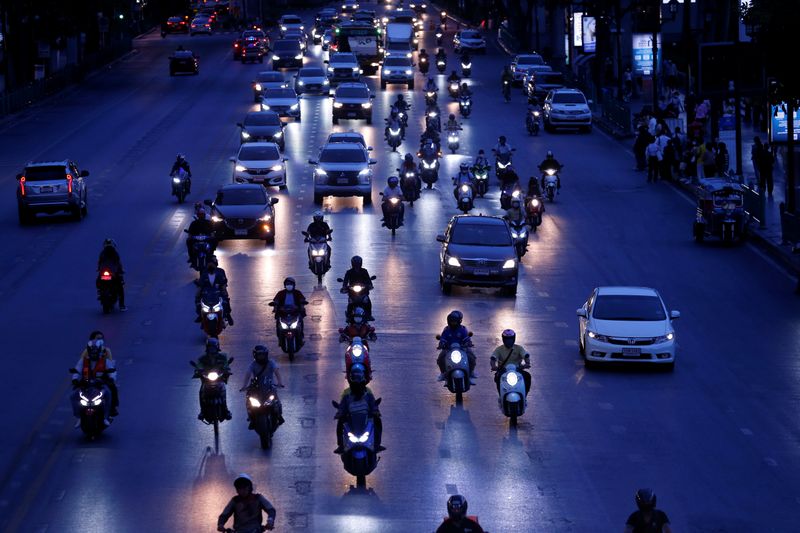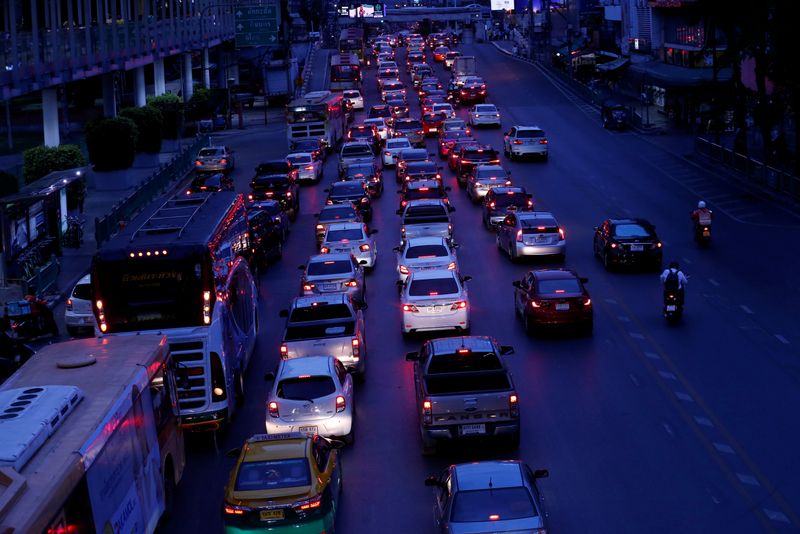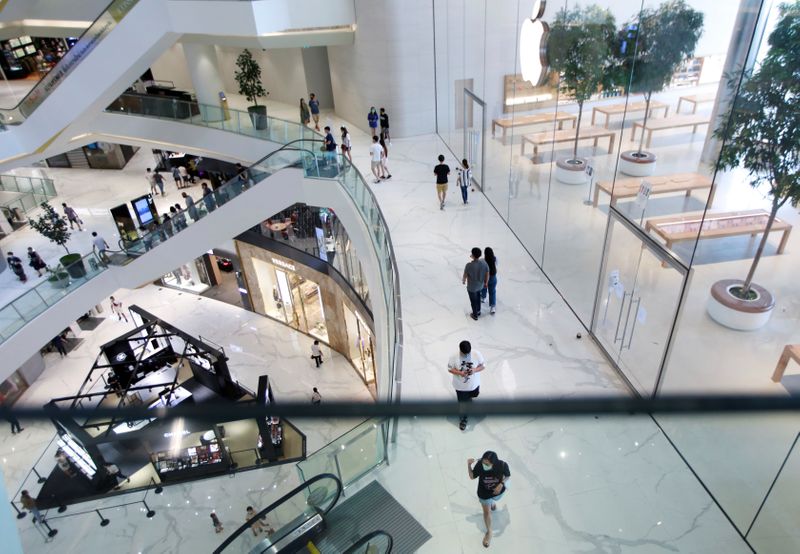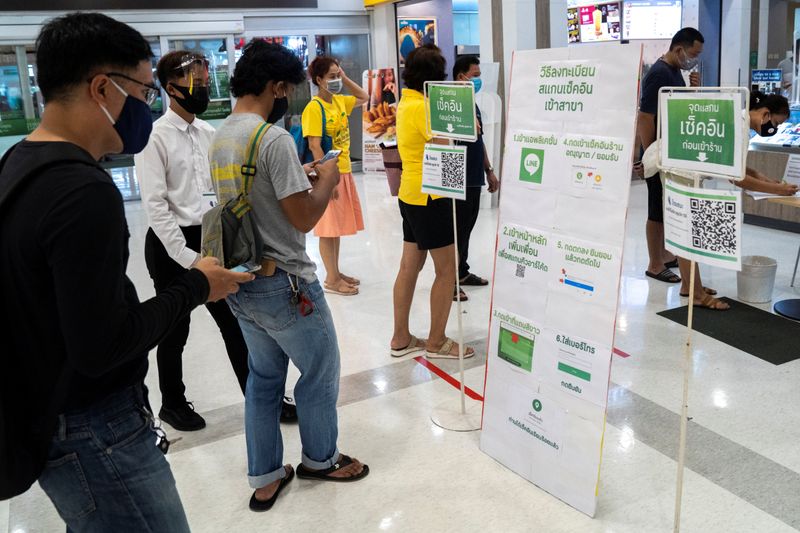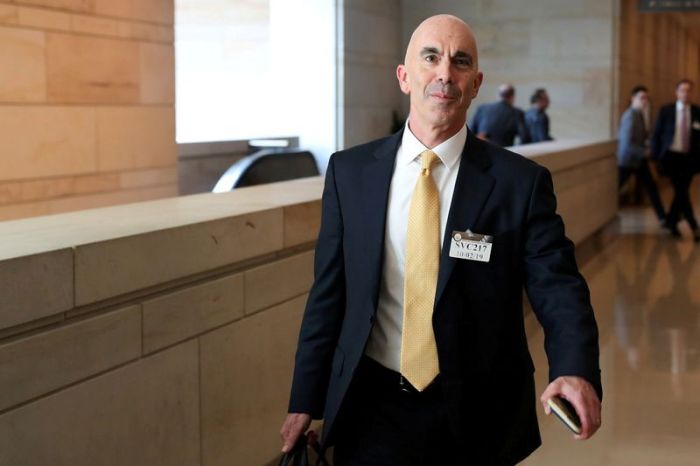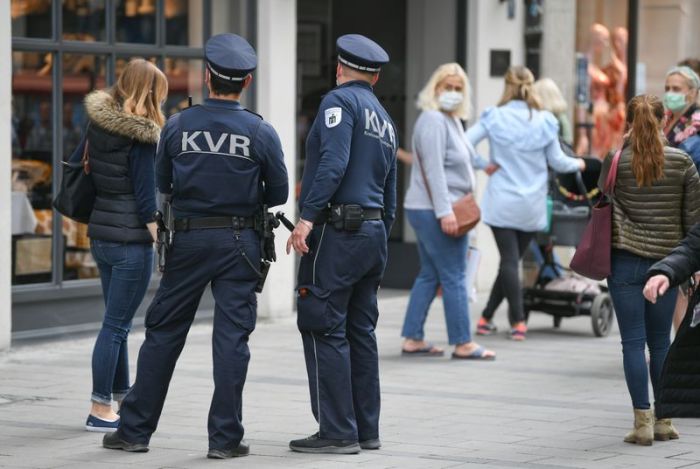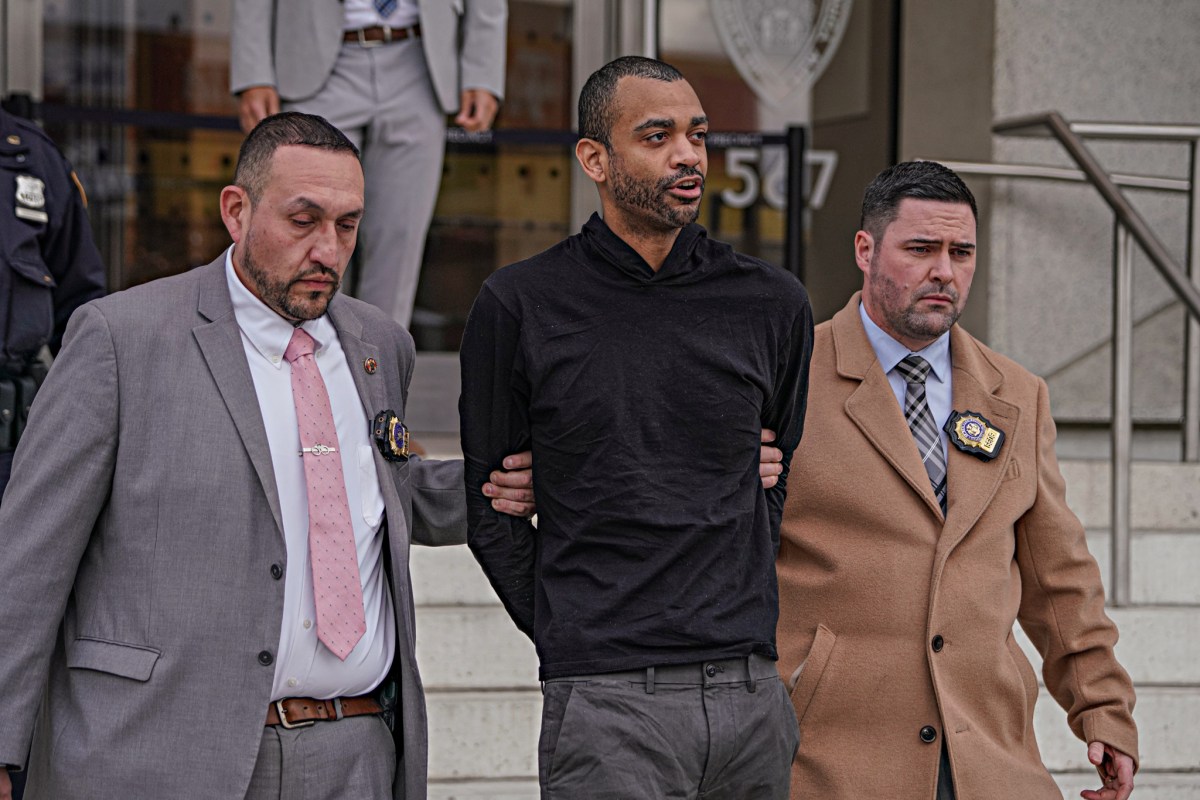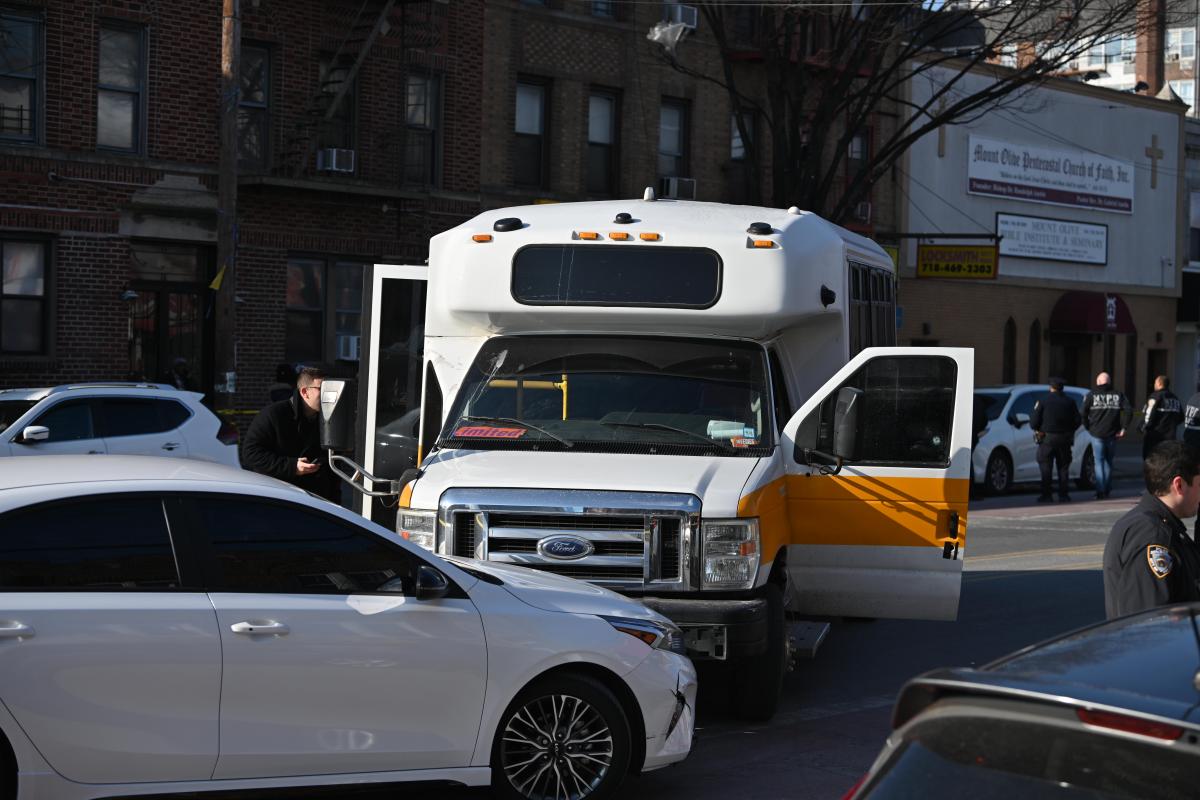BANGKOK (Reuters) – Cars, trucks and motorcycles jostled on Monday in a return of the Thai capital’s familiar gridlock as commuters headed back to work in the second phase of easing coronavirus restrictions to get the economy back on track.
As snarl-ups grew in Bangkok’s notoriously congested streets, travelers headed to its northern bus terminal to get out to the provinces for the first time since March, most sitting beside empty seats, in line with social distancing rules.
“I’ve been waiting to go home for many months. I’m glad to finally be able to do so,” said Ratchari Maneenop, 22, who was heading to her home province of Loei in the northeast.
Thailand reported three new coronavirus infections on Monday, taking confirmed cases to 3,031 since January, with 56 deaths.
But restrictions on commerce and transport have battered tourism, household spending and private investment, leaving a dent in Thailand’s economy, which contracted at its sharpest pace in eight years in the first quarter, pushing it into recession sooner than expected.
Bus driver Boonsong Misa said he was thrilled to be back on the road.
“I’ve stopped working since March 8, it’s been two months already,” he said at the bus terminal. “I’m glad that I get to do the job I love again.”
Queues formed on Sunday at the reopening of Thailand’s malls, where some operators using touch-less elevators and deploying robots to take customers’ temperatures.
Even though Thailand has been reporting fewer coronavirus cases in recent weeks, the government is keeping closed places that typically attract large groups of people, such cinemas.
Passenger flights have been halted until the end of June.
“Do not sit” signs have been posted on many of the seats on Bangkok’s elevated train network to give sufficient gaps between passengers and floor markers are in place to control lines.
There were similar traffic jams in the Philippines, with trucks and private vehicles pouring into the capital Manila, which started a “modified” lockdown. Some businesses and offices are allowed to reopen, but public transport remains suspended, leaving many workers in the lurch.
“I’ve been waiting for over 30 minutes, hoping to get a ride,” said commuter Rolan Obani.
“My work is very important to me.”
(Reporting by Artorn Pookasook, Prapan Chankaew and Panu Wongcha-um; Additional reporting by Adrian Portugal in Manila; Writing by Martin Petty; Editing by Robert Birsel)

